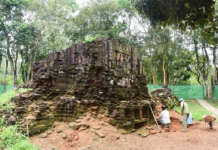In 1994, Ha Bac Province’s Museum (now Bac Giang Province’s Museum) carried out an inventory and researched this precious storage of woodblocks. There were a total of 3,050 woodblocks and most of them were carved from the 17th – 19th century. They were mainly sutras, books and documents of Buddhist commandments and some poems, poetic essays and diaries of eminent monks of the Truc Lam Yen Tu Zen School. For its inestimable value, the woodblock preservation in Vinh Nghiem Pagoda has been evaluated as a “national precious thing”.
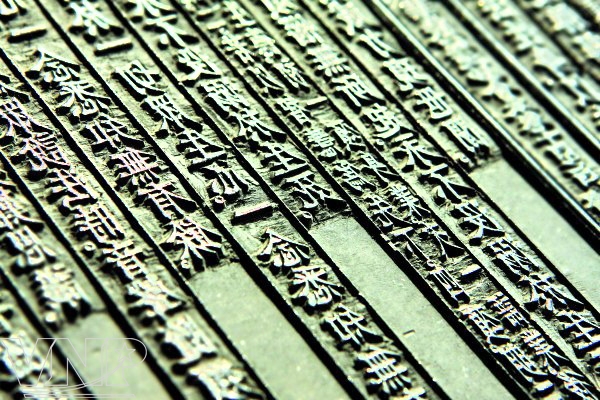 An invaluable woodblock of Buddhist sutra. Photo: Tran Huan 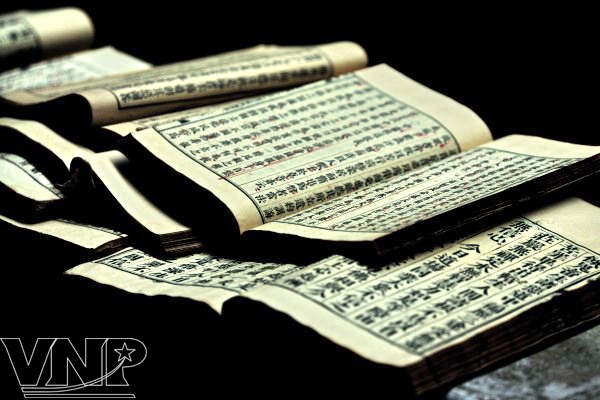 Books printed by woodblocks of Vinh Nghiem Pagoda. Photo: Hoang Quang Ha 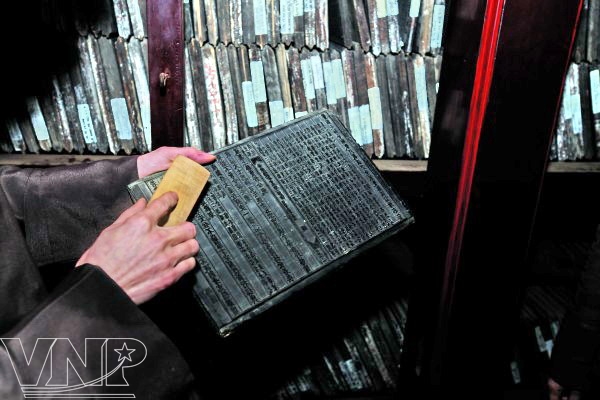 Preserving ancient woodblocks. Photo: Hoang Quang Ha  Vinh Nghiem Pagoda where over 3,000 ancient woodblocks are preserved. Photo: Tran Huan 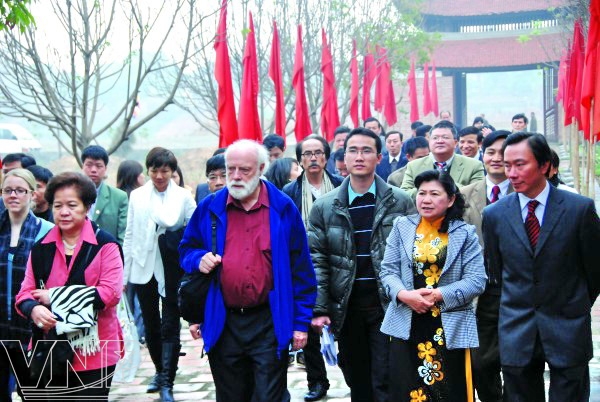 A UNESCO delegation and Vietnamese archeologists visit Vinh Nghiem Pagoda. Photo: UNESCO’s file 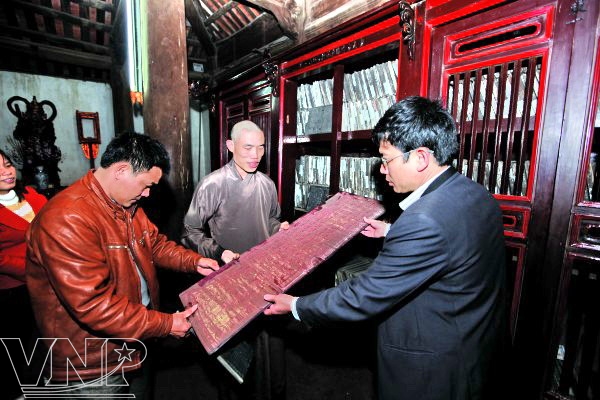 Tourists are amazed by an ancient woodblock of Buddhist sutra. Photo: Hoang Quang Ha |
The size of the woodblocks varies depending on the categories of the sutras. The biggest woodblock is over 1m in length and 40-50cm in width. The smallest one is only 15 x 20cm. The surface of the woodblocks has a shiny black colour which is the printing ink left from the prints. Due to these layers of printing ink the woodblocks are durable, long lasting and woodworm-resistant.
The set of woodblocks in Vinh Nghiem Pagoda has been determined by researchers as having great value in learning. On the basis of the content of these woodblocks people can decode many issues from the past, such as the history of Vietnamese Buddhism, science and techniques, philosophy, sociology and linguistics. The Chinese and Nom scripts on the woodblocks serve as a basis for linguists and historians to explain the history and the development process of the Vietnamese people’s handwriting, especially the change of Chinese scripts (of Chinese people) into Nom scripts (a type of pictographic script created by Vietnamese people on the basis of Chinese scripts). This not only shows the development of linguistics and scripts but also the national pride of the Vietnamese people.
The appropriate authorities have prepared documents to submit to UNESCO for its recognition of the woodblocks in Vinh Nghiem Pagoda as a World Documentary Heritage. Hopefully, in the near future Vinh Nghiem Pagoda’s woodblocks will be “awakened” and glorified after nearly two centuries of “sleeping” in the dust of time.


